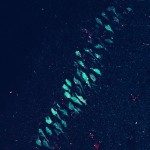Lien vers Pubmed [PMID] – 20923695
Neuroscience 2010 Dec;171(3):840-51
The Balb/c strain and the C57BL/6 strain show constitutive differences for tyrosine hydroxylase expression, and noradrenaline (NA) prefrontal transmission. Male mice of these strains also show striking differences in social interaction behaviors, with an increased aggressiveness for the Balb/c strain. To test a potential link between these neurobiological and behavioral parameters, we evaluated the behavioral effects of chronic treatment of mice with BC19, a noreburnamine compound previously known as RU24722, found to modify cell organisation, tyrosine hydoxylase (TH) expression, and its activity into the locus coeruleus (LC). We compared the pharmacological effects between the two strains in social behaviors. Our results show that the emergence of additional TH-expressing (TH+) neurons in the rostral part of the LC of Balb/c mice was associated with an increase in the density of TH+ and noradrenergic (NA+) fibers in the molecular layer in the cingular (Cg1) and prelimbic (PrL) parts of the prefrontal cortex (PFC). BC19 treatment resulted in the near-equalization of the LC number of TH+ neurons and of the density of TH+ and NA+ fibers between both strains. The aggressiveness in Balb/c mice was considerably diminished by BC19 treatment, while the originally non aggressive behavior of C57Bl/6 mice was much less affected by BC19 treatment, despite a moderate increase in some offensive behaviors. In additional control experiments, we checked the effect of BC19 on a separate test for anxiety and assessed the effect of noradrenergic N-(2-chloroethyl)-N-ethyl-2-bromobenzylamine hydrochloride (DSP-4) mediated lesions in C57BL/6 mice on social behaviors. In the present study we show that the BC19 effect in Balb/c mice was independent of anxiety as measured in the light/dark test and that DSP-4 lesions in C57BL/6 mice produced a robust increase in aggressive social interaction. Altogether, these results show that the noradrenergic system, and particularly its projections to the PFC, strongly modulates aggressive behaviors.
